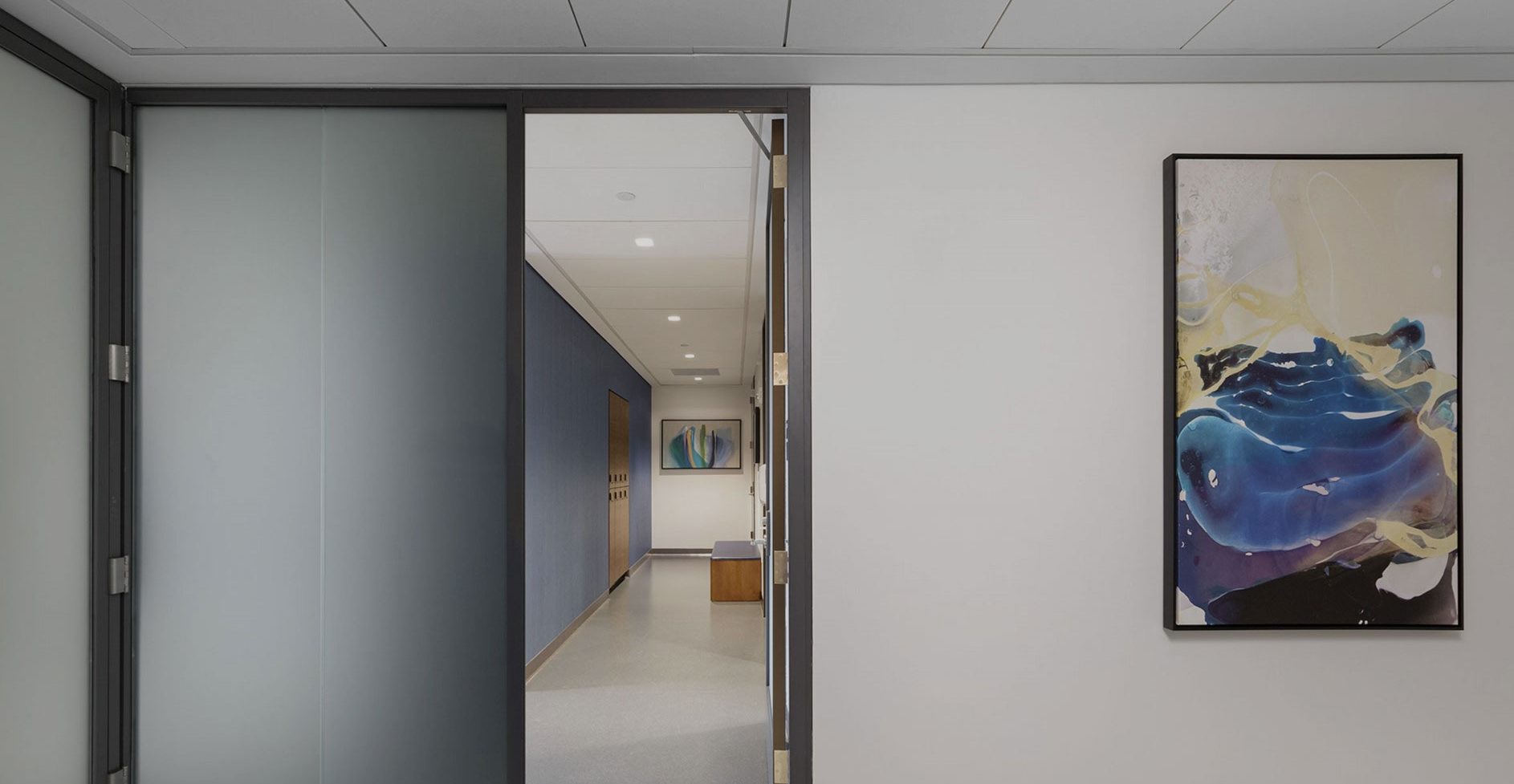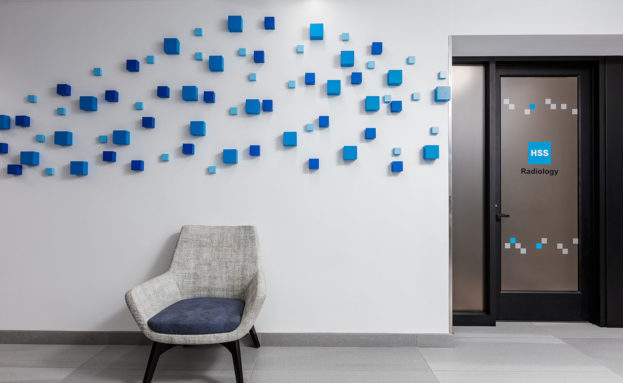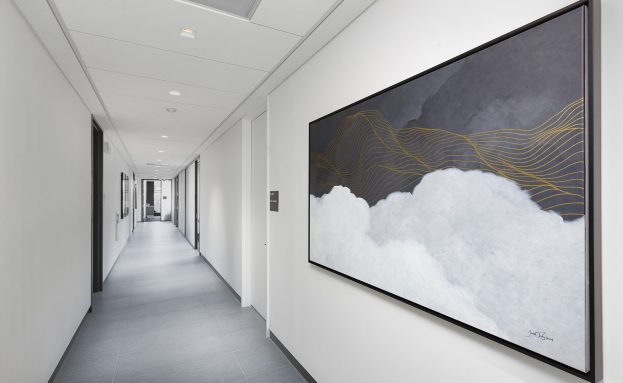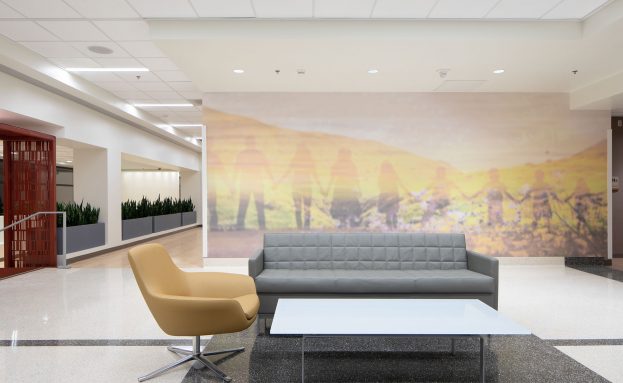Thoughtfully curated art for healthcare spaces offers a welcome distraction for patients in a setting where so much attention is on illness, injury, and pain. Understanding how to select art for medical facilities can be daunting, especially when you consider the power it has to either promote or impede healing.
In honor of World Health Day, we would like to share with you some of what we consider the most important aspects of specifying art for wellness.
Criteria for Selecting Art
Subject Matter
Subject matter is perhaps one of the most important considerations when curating art for a wellness space. From the property’s location to potential interpretations of prospective patients, there is a lot to think about. While it may be refreshing to test the boundaries of what is expected in hospitality spaces, the same cannot be said for healthcare environments.
When selecting artwork for hospitals or clinical settings, the subject of the artwork should be driven by the intended audience and the desired effect. For example, newer hospitals might choose a mixture of colorful abstract and soothing contemporary nature-focused imagery to appeal to a broad range of patients from all ages and backgrounds. Senior assisted living and memory care communities, however, may favor more traditional pieces like landscapes or art meant to evoke fond memories of years past.
As a rule, art placed in healthcare or wellness spaces should be positive and welcoming. Nature and wildlife are popular requests, especially those with a connection to the facility’s location. Realism is generally preferred, though impressionist pieces may be considered provided that the subject is recognizable. In general, we recommend against portraits, but there are of course exceptions to the rule. If you’d like to incorporate architectural photography, you should ensure that the composition is interesting enough to hold the viewers gaze without being too busy.
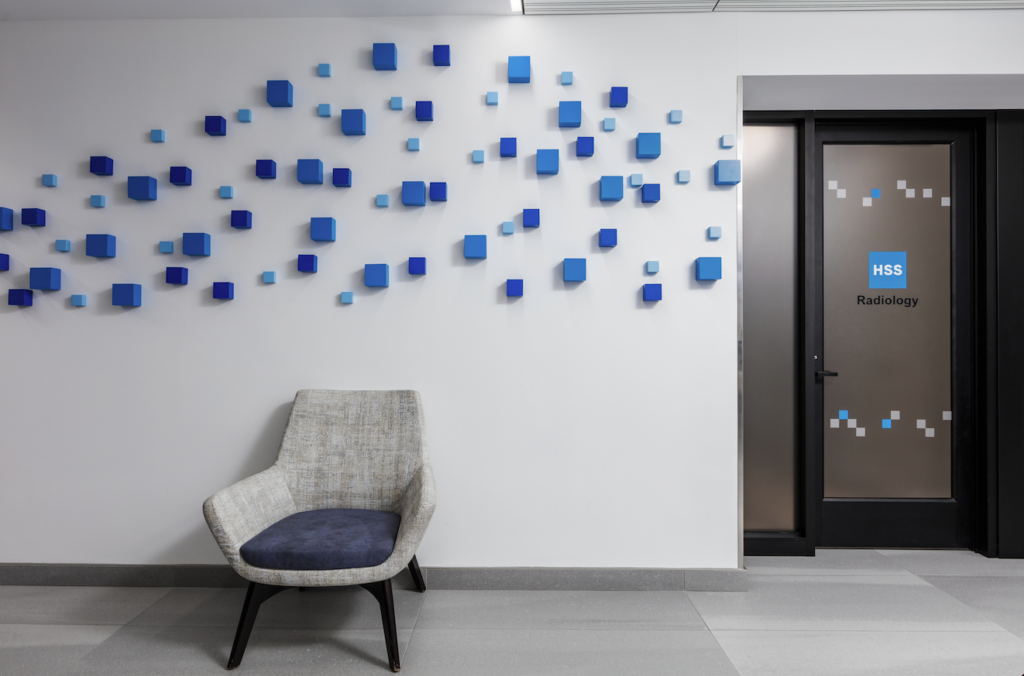
Color
When selecting a color palette for a clinical setting, we recommend embracing warm tones. Selecting art and accents in earthy hues has the effect of making any space feel more inviting. If given a design directive to work with cooler tones, it’s still a good idea to intersperse warm accents. If you’re working with brighter colors, it is important not to go too bold. Highly saturated dark or light colors may have the unintended impact of evoking anxiety and therefore should be avoided or used sparingly.

Mount Sinai Health Center at Hudson Yards, New York NY
The Positive Impact of Art
Studies have shown that hospitalized individuals are likely to interpret art through the lens of their own stress or anxiety, sometimes referred to as “emotional congruence”. This idea should come as no surprise to answer who has ever found new meaning in artwork while in a particularly emotional state of mind. That said, it’s important for designers and art advisors to keep these kinds of dynamics top of mind when curating art for medical spaces.
Among healthcare practitioners, drawing attention away from pain is a commonly used strategy for controlling it. Increasingly we are seeing healthcare facilities beginning to employ various types of artwork to support this strategy. Art in a wide range of styles gives patients something to focus on during their hospital stay besides their pain or discomfort.
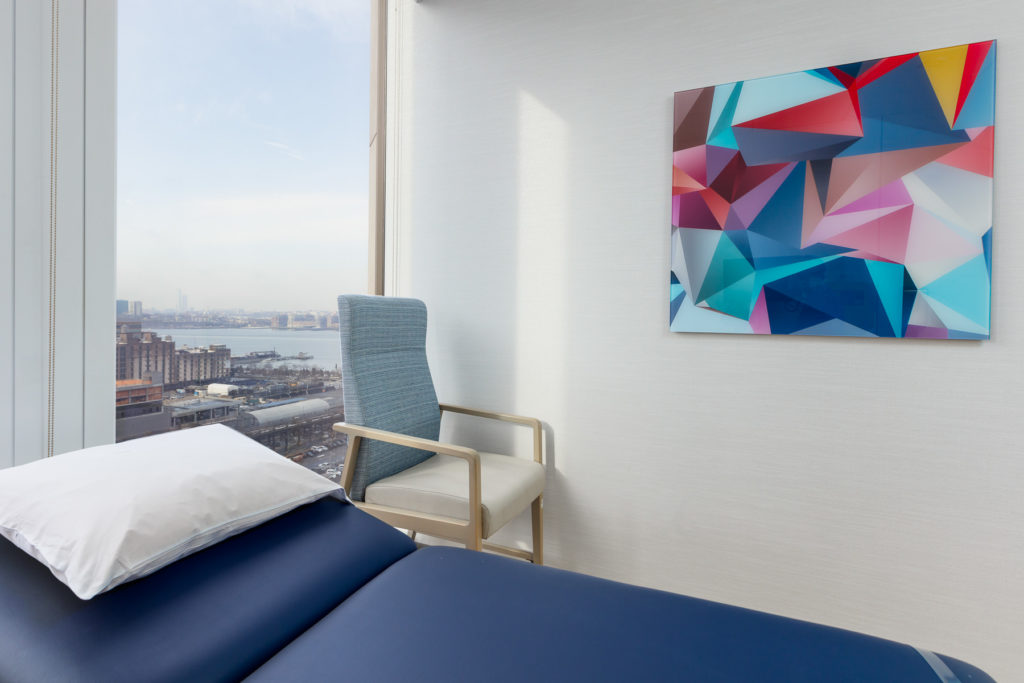
Art as a Window to the World
Most of us have experienced the healing power of the great outdoors. Art can be a great way to harness the curative properties of nature and bring it indoors. Apart from beautifying a space, art that reconnects patients with nature can have a positive effect on those with symptoms of depression, pain, and anxiety.
When patients look at a beautiful, nature-inspired sculpture, painting, or photograph it evokes comforting, meditative feelings. Biophilia, or an innate affinity for life and living organisms, is an interior design practice that has been shown to shorten recovery times for hospitalized patients. This is just one of the many reasons nature-inspired art is preferred by healthcare professionals.
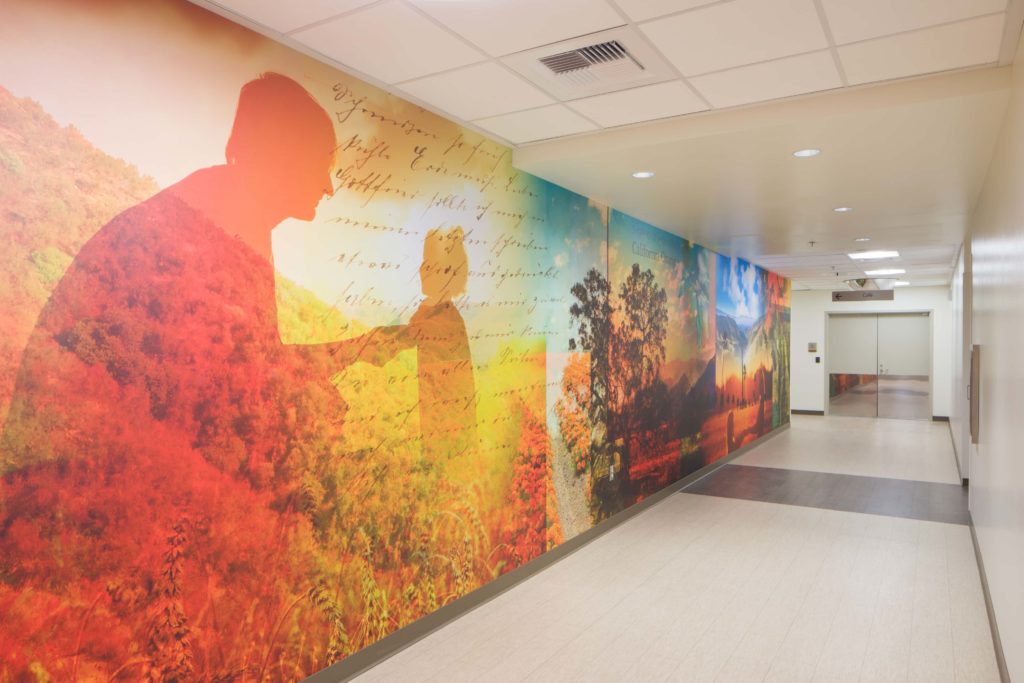
Henry Mayo Newhall Hospital, Valencia, CA
We Know Healthy Design
The art advisors at KBAA have more than 25 years of experience using scientific, research-based knowledge to curate or commission the perfect artwork for your facility. We work with healthcare professionals across the country to improve patient and staff well-being, patient healing, and reduce stress.
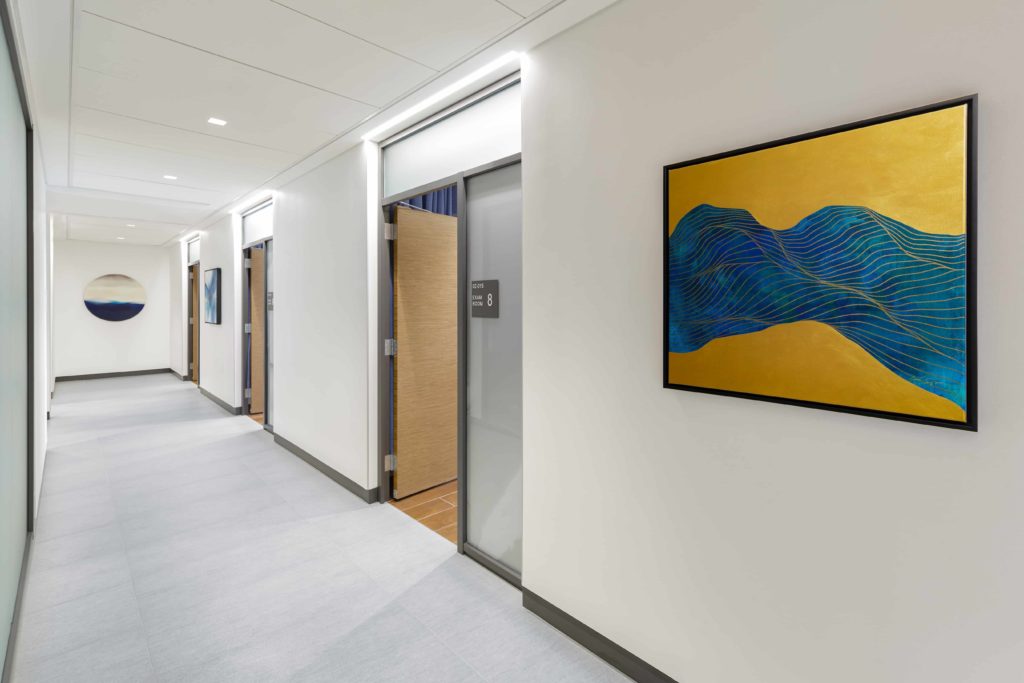
Mount Sinai Health Center at Hudson Yards, New York NY
Let Us Bring a Dose of Wellness to Your Next Project
